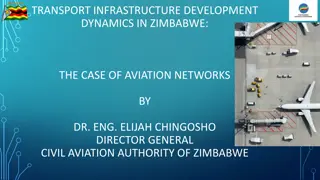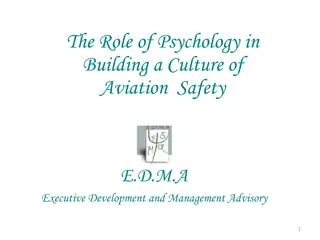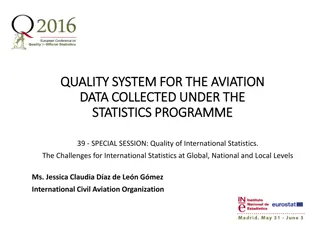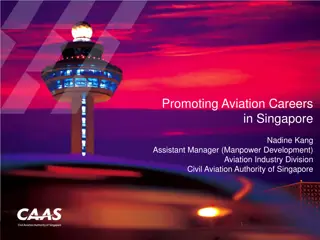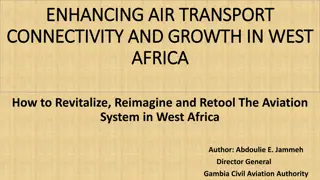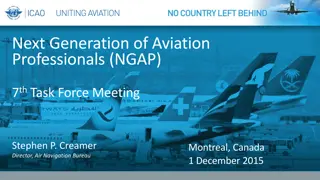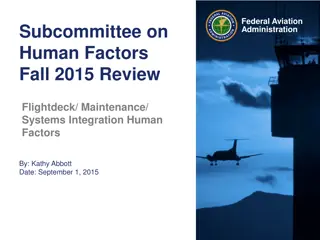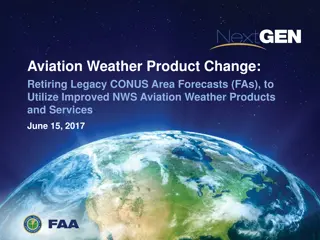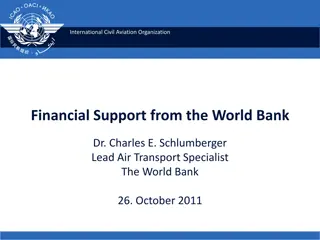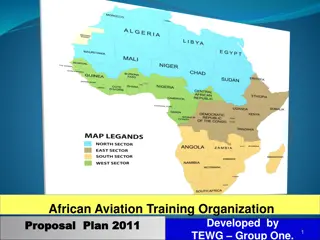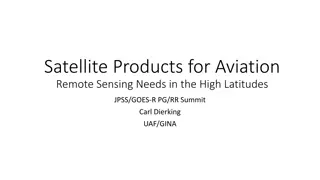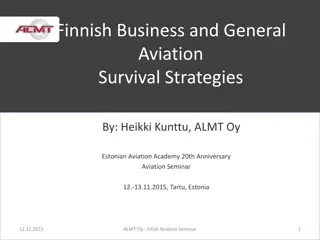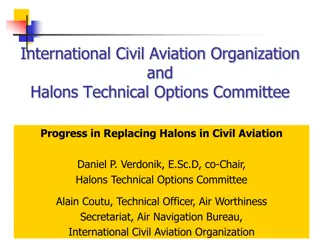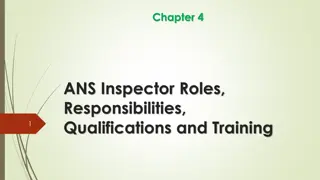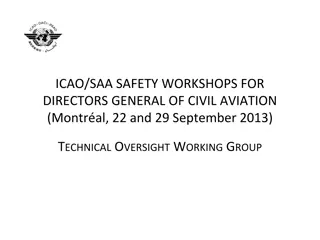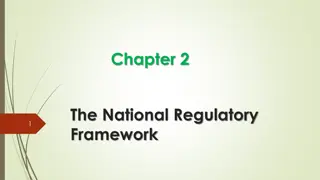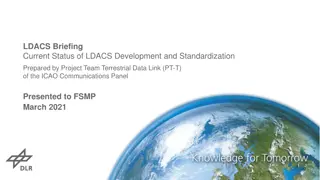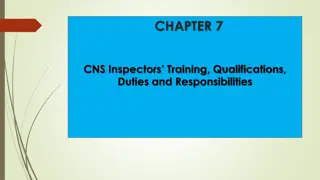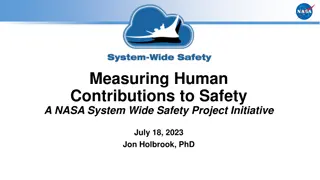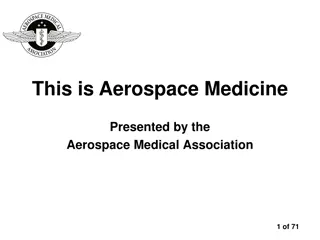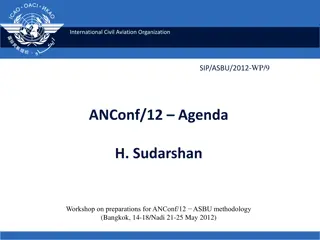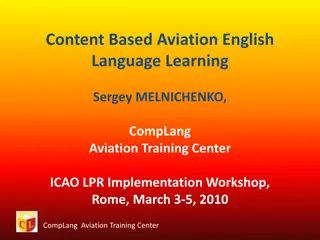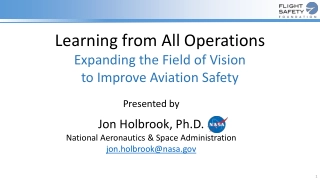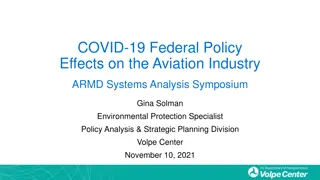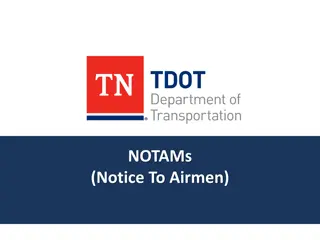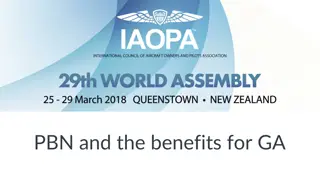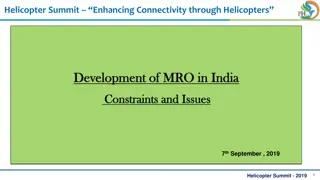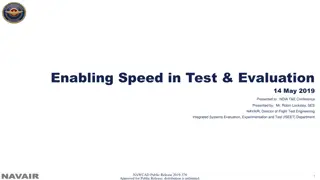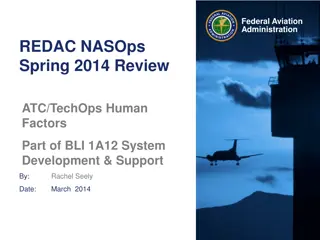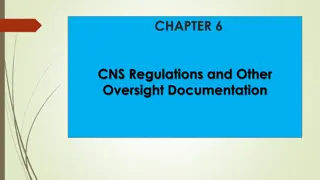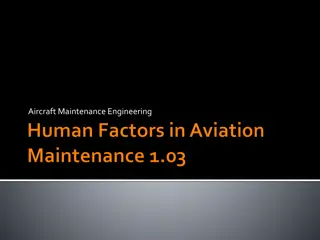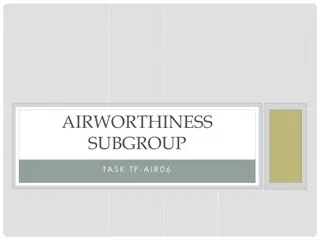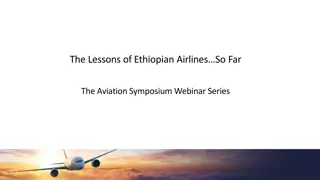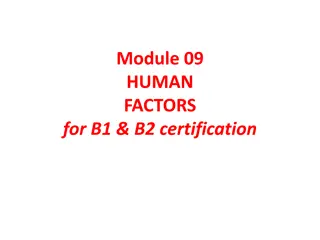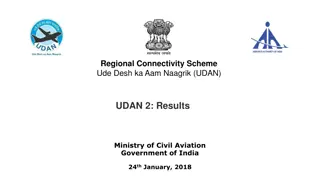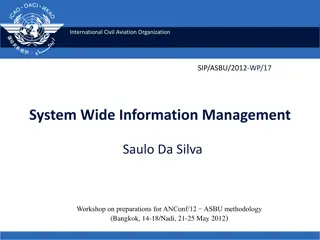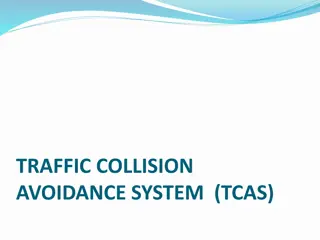Overview of State A Aviation System
State A's aviation system includes a structured airspace with FIRs, airports, military bases, and training areas. Lack of civil-military coordination poses safety risks. Future considerations involve accommodating traffic growth and expanding airspace for new combat aircraft. The military fleet comprises various aircraft types, and aviation authorities are well defined. State A faces challenges requiring improved coordination between civil and military entities.
Download Presentation

Please find below an Image/Link to download the presentation.
The content on the website is provided AS IS for your information and personal use only. It may not be sold, licensed, or shared on other websites without obtaining consent from the author. Download presentation by click this link. If you encounter any issues during the download, it is possible that the publisher has removed the file from their server.
E N D
Presentation Transcript
Supporting European Aviation Exercises setup 10 October, 2024
State A organisation State A airspace structure consists of: 4 FIRs (Navy blue, Yellow, Red and Green) 4 Airports (Charles, Blair, Switch, Flow) with City Pairs (C/S, F/S,C/F) Routes structure between gates A1, A2, B1, B2, C1, C2 accommodates the international traffic flows Navigation through VORs (from 1 to 10, including the gates, max range 200 Nm) 5 military Air Bases (MAB1 MAB5) 4 military training areas (M1 M4) Additional information: Light blue area on the map represents High Sea area Half of the military areas are unused and the others do not match the military needs En-route capacity is at the edge It is peace time and there is no security risk at the border Keep in mind: friendship and respect 2
State A cooperation and coordination No civil-military cooperation and coordination body exists No formal meetings between Civil and Military have been occurring in the past 5 years There has been recent safety incidents between civil and military aircraft inside controlled airspace due to the absence of tactical coordination mechanism Future considerations State A needs to accommodate a growth of traffic of 5% a year State A Air Force has recently acquired new modern combat aircraft that requires bigger airspace for training 3
State A aviation information Military fleet is composed of: Old combat aircraft Military tactical transport aircraft Helicopters Training propeller aircraft Medium Altitude Long Endurance (MALE) drones Civil aviation: 2 national and 10 international airlines operate from all 4 airports En-route traffic is regular 4
State A aviation authorities structure CAA: State A has a fully functional CAA, a DG is in place The airspace Director is accountable for Airspace, ATM and airports MAA: Military aviation is represented by the Air Force HQ The Air Force Commander is accountable for air operations of all branches (air force, navy, army) The Air Force Chief of Operation is at the same time the operating authority and the military regulator The Air Force chief of maintenance is the focal point for all CNS matters The military ATM director is regulating all military air activities, and oversee all military ATS units and the air defence unit responsible for the State airspace security The military ATM director reports to the Air Force Chief of Operation 5
State A operational controlling units Civil ANSP The ANSP is a separate entity from the CAA, and it provides civil ATS for the whole State 1 ACC provides area control service to civil aircraft in the civil ATS network, and the approach centre is physically located in the ACC Military ATM 1 Military ACC: responsible for providing area control service (and flight information service, when applicable) for military flights outside the military areas Each military airfield has a control tower and an approach control centre Military Air Defence One Military Air Defence centre is responsible for State airspace security (surveillance, incidents response ) and control inside the military areas 6
State A CNS considerations Both military and Civil have Primary and Secondary Radars Civil has Mode S EHS Radars No radar Data exchanged between Civil and Military exists so far All FPLs are sent by Fax from Civil ANSP to military Air defence No ATM messages are exchanged between Civil and Military ATM systems Civil ANSP and Military ACC Supervisors have the phone number of each other Military ACC Supervisor is in contact with the Military Air defence controlling unit 7
Exercises description Exercise 1 Assess the cooperation situation and the future requirements Exercise 2 Define the Civil-Military cooperation framework and strategic actions for implementation Exercise 3 Design the airspace to accommodate the civil and military requirements with a common Civil-Military strategic level framework Exercise 4 Apply the strategic cooperation framework in the daily airspace management Exercise 5 Apply tactical coordination based on some use cases 8


